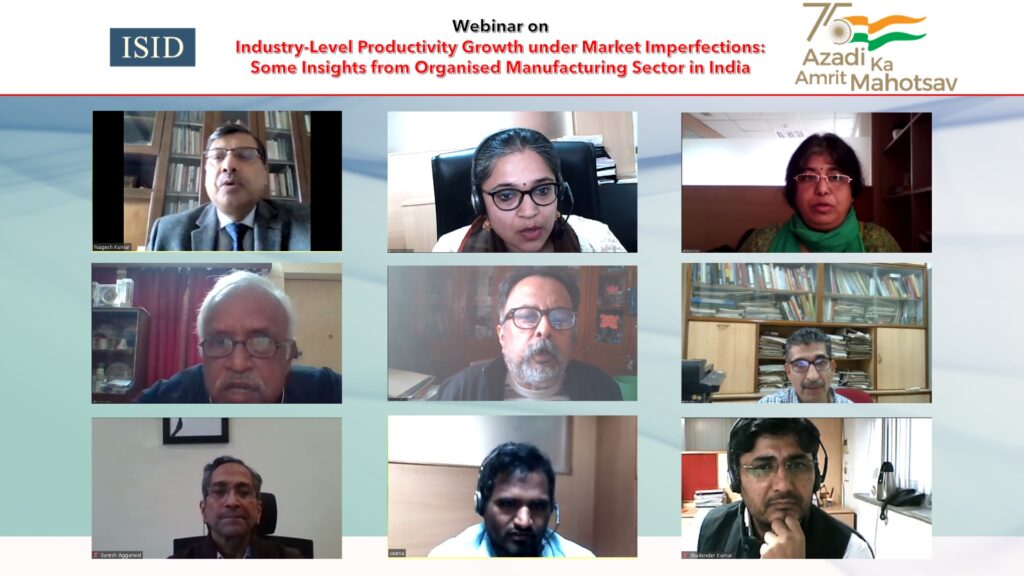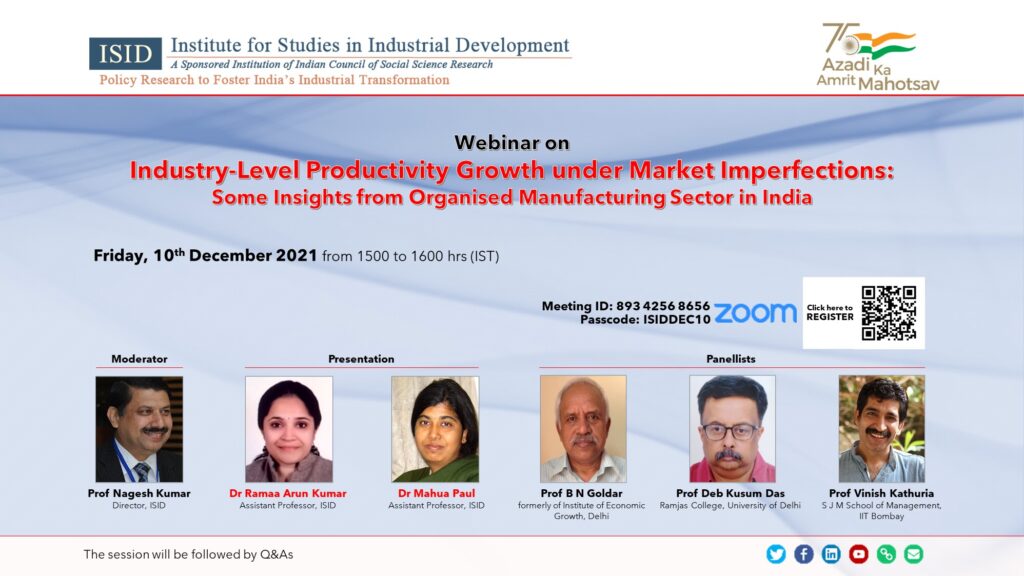In a globally connected world, productivity and competitiveness of manufacturing sector of any economy is critical for sustained economic growth. In particular, consistent total factor productivity growth (TFPG) of a firm leads to competitiveness. The study presented in the webinar on industry level productivity growth was an attempt to understand and analyse the productivity growth in Indian organised manufacturing sector. Traditional estimates of TFPG assume perfect competition in product as well labour markets.
The model in the study is based on the theoretical framework provided by studies such as Hall (1988), Abraham et al. (2009), and Crepon et al. (2005) that incorporate market imperfection in labour and product market, thereby modifying the traditional total factor productivity estimation as Solow Residual. Total factor productivity growth for the post-2008 period is estimated for selected industries in the manufacturing sector at NIC 3-digit. The model enables the estimation of bargaining power and price mark-up behaviour, for which the study divided the 65 industries into 15 broad sectors to analyse the market imperfections at sectoral levels.
The results indicated that the productivity growth was higher when market imperfections were ignored in both product and labour markets. There is considerable variation in TFPG across industry groups, indicating the role played by market imperfections in affecting the conventional measure of productivity growth. Furthermore, estimates of bargaining power and price mark-up across industry groups indicate that higher bargaining power co-exists with higher mark-ups in many industry groups. This implies that the presence of imperfections in labour market leading to higher bargaining power leads industries to share profits with their employees. Another explanation could be that in order to sustain higher mark-ups, firms in these industries could be employing higher-skilled labour which has lower elasticity of substitution, thus wielding higher bargaining power.
In the last part, the role of industrial agglomeration in explaining the heterogeneity of variation in TFPG in the Indian organised manufacturing sector is explored. The source of productivity growth in firms located in agglomeration areas is generated from several factors (Lall et al., 2001): due to improved access to market centres, at firm level; intra-industry linkages, at the industry level; and, finally, through inter-industry urbanisation, at the regional level. An industrial agglomeration index based on the Ellison and Glaeser (1997) framework (EG-Index) is computed for the period of our study and the impact on TFPG is estimated using panel data estimation. Agglomeration economies positively affect productivity mainly for the medium-high technology intensive industries in the organised manufacturing sector of India. Growing digitisation in manufacturing seems to be beneficial for the productivity growth in Indian manufacturing industries, however, with a lagged effect.

The study was jointly conducted by Dr Ramaa Arun Kumar and Dr Mahua Paul. To get a deeper insight into the findings of this study, a webinar on “Industry-Level Productivity Growth under Market Imperfections: Some Insights from Organised Manufacturing Sector in India” was organised on December 10, 2021. The session was moderated by Prof Nagesh Kumar, who set the narrative for the discussion. Distinguished panellists included Prof B N Goldar (formerly in Institute of Economic Growth); Prof Deb Kusum Das, Ramjas College, Delhi University; and, Prof Vinish Kathuria, SJM School of Management, IIT Bombay.


